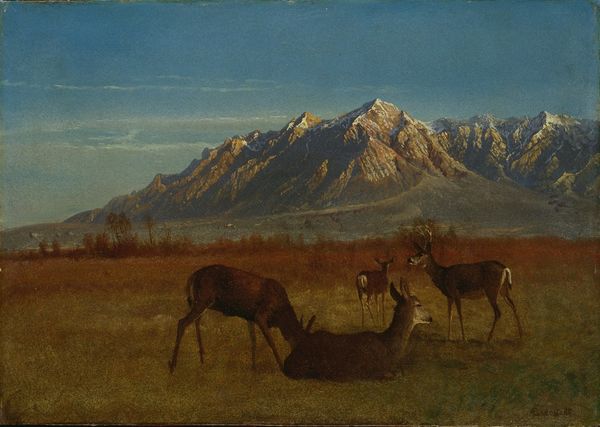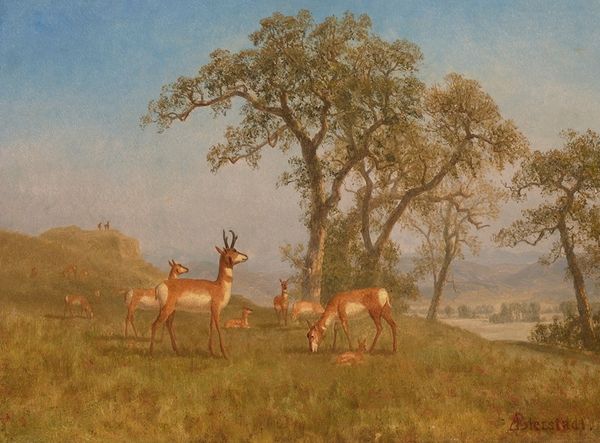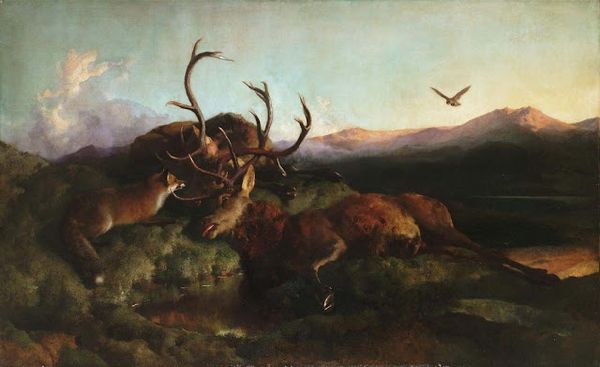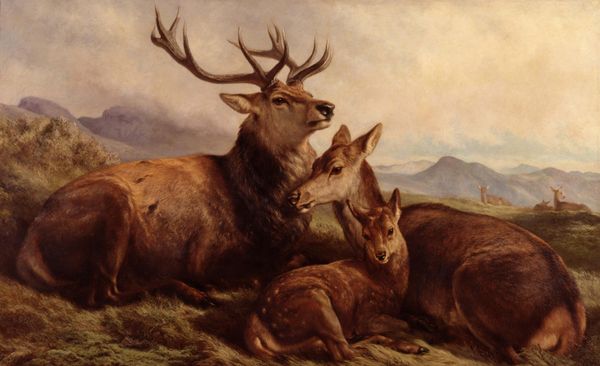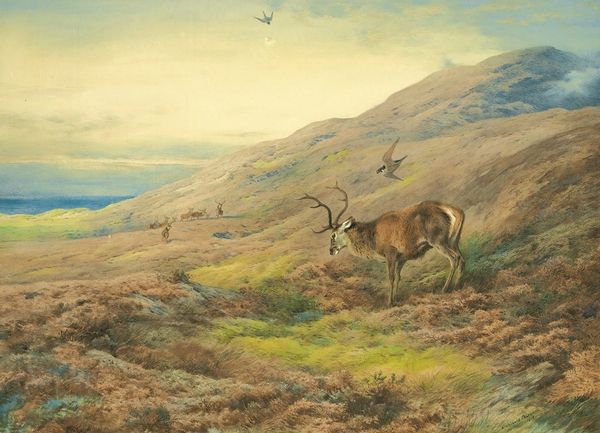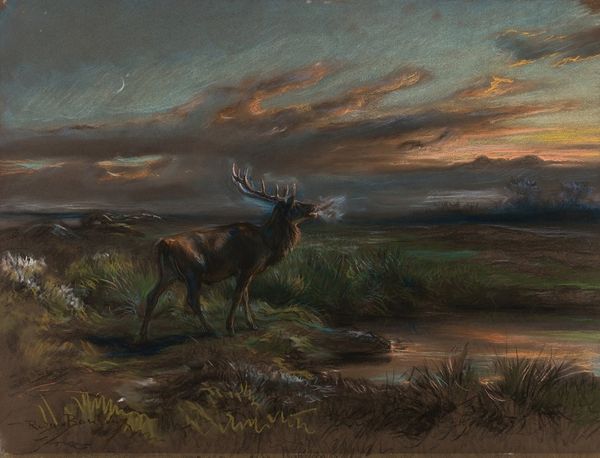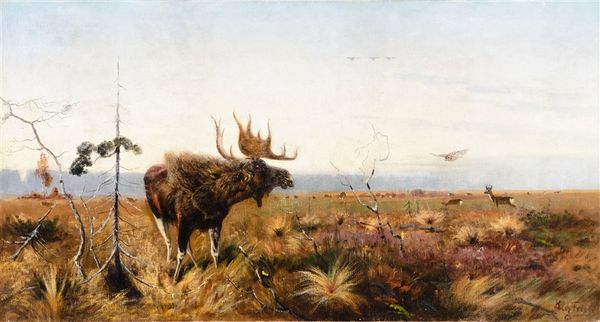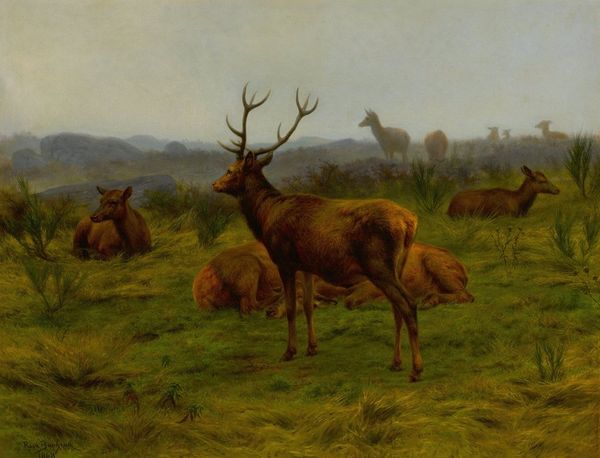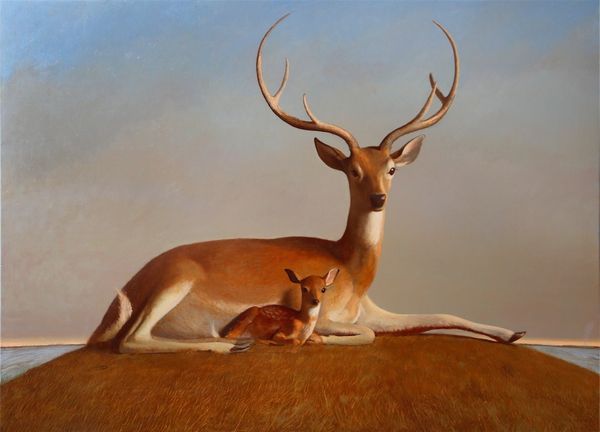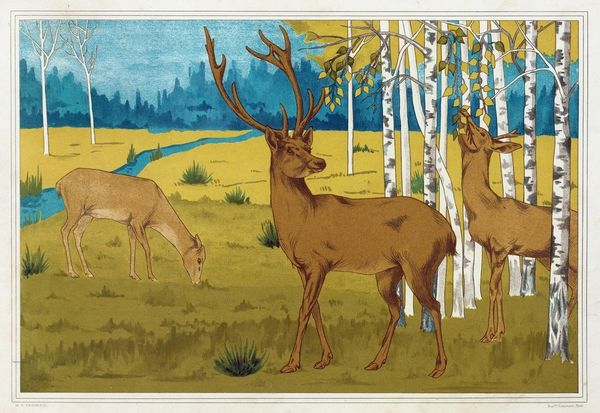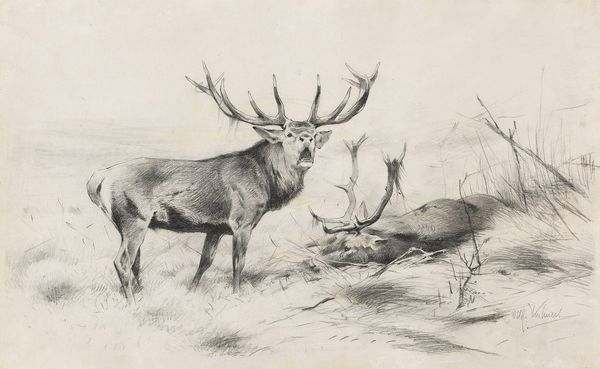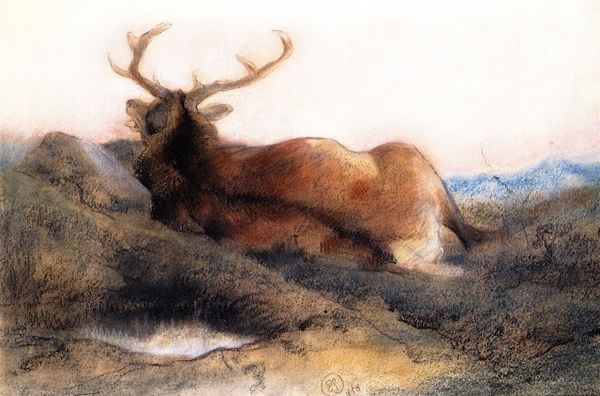
painting, oil-paint
#
portrait
#
animal
#
painting
#
oil-paint
#
landscape
#
oil painting
#
realism
Copyright: Public Domain: Artvee
Editor: We’re looking at Albert Bierstadt’s oil painting, Deer. It's lovely, the way the light hits the mountains in the background is striking, and the animals feel very much part of the scene. What stands out to you when you look at it? Curator: It’s easy to be drawn in by the landscape, isn't it? But what’s interesting to me is the process by which Bierstadt, and indeed painters like him, created these illusions of wilderness. Oil paint became widely available, transforming how landscape paintings were made, and even consumed, by a growing middle class eager to imagine the American West as an untouched frontier. Do you see anything in the brushstrokes that hints at this industrialized production? Editor: I can see thick layering of the paint in the grass, perhaps suggesting the tools he used to create the effect? How did these paintings become so popular? Curator: The mass production of paint, brushes and canvases lowered costs for creating the painting and viewing artwork became less limited to the elite. Publishers capitalized on them, reproducing and selling them as prints for mass consumption. How do you think the distribution of such works impacts our idea of realism in art? Editor: So, the paintings become a product in and of themselves? Fascinating! The idea that even representations of nature can be so entwined with industrial processes gives you a lot to think about. Curator: Exactly. This piece, seemingly capturing an unspoiled moment, is inherently linked to the rise of industry and its accessibility in American culture at the time. We might consider our own implication as consumers of these ideas even now.
Comments
No comments
Be the first to comment and join the conversation on the ultimate creative platform.
